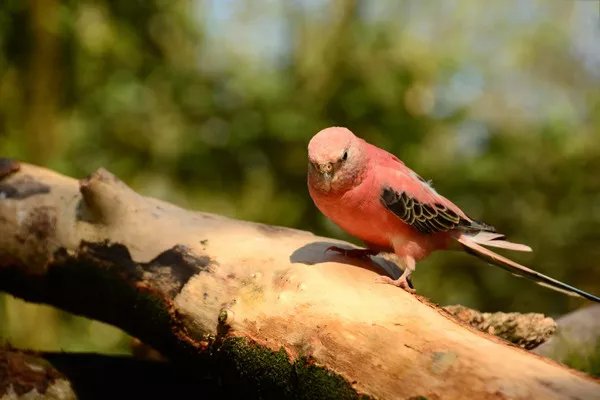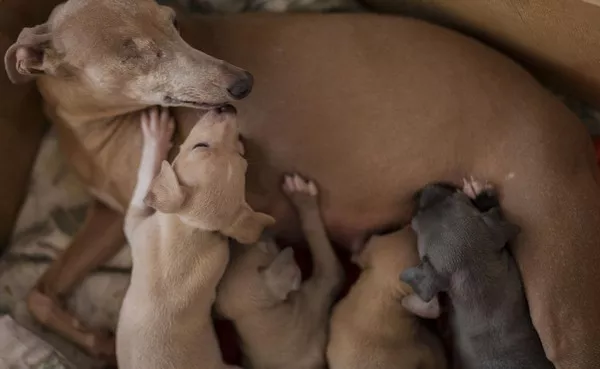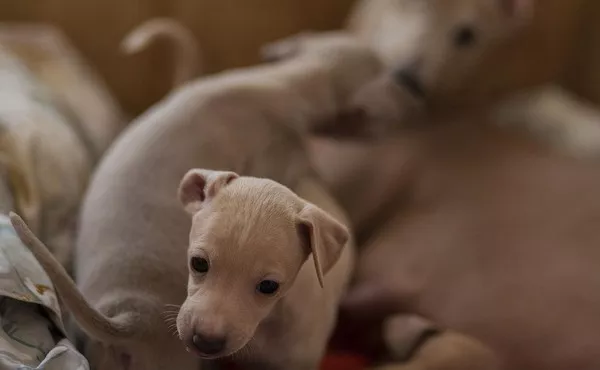Corn snakes, scientifically known as Pantherophis guttatus, are a popular choice among reptile enthusiasts. These non-venomous snakes are native to North America and are known for their docile nature and attractive coloration. While corn snakes may seem relatively harmless to humans, they are effective predators in the wild. One of the most interesting aspects of their hunting behavior is the way they kill and consume their prey. In this article, we will explore how corn snakes kill their prey, the biological processes behind it, and how their hunting techniques have evolved over time.
The Corn Snake’s Diet
Before we dive into how corn snakes kill their prey, it’s important to first understand what they eat. Corn snakes are constrictors, which means they do not rely on venom to subdue their prey. Instead, they capture their prey and kill it through physical means. In the wild, corn snakes primarily hunt small mammals like mice, voles, and rats. They will also eat birds, lizards, and even amphibians if the opportunity arises. Pet corn snakes are typically fed a diet of appropriately-sized rodents, which are usually provided frozen and thawed.
While corn snakes have a varied diet, their prey size is generally no larger than the size of the snake’s girth. This is an important point because it influences how they hunt and kill their prey. A snake will typically target animals that are small enough to overpower and swallow in one sitting. Now, let’s explore how they manage to catch and kill their prey.
The Anatomy of a Corn Snake: Tools of the Trade
Corn snakes have specialized anatomical features that make them effective predators. Their bodies are long, slender, and flexible, which enables them to move through tight spaces and strike quickly. Corn snakes are ambush predators, meaning they often rely on stealth and patience when hunting. Their prey doesn’t always know the snake is lurking nearby until it’s too late.
1. Teeth and Jaws
While corn snakes lack venom, they have a set of sharp teeth and a strong jaw structure designed for gripping and holding onto their prey. Their teeth are curved backward, which makes it difficult for the prey to escape once it has been bitten. The teeth also help the snake latch onto its prey as it moves in for the constriction phase.
Corn snakes also possess a unique jaw structure. Their jaws are not rigidly connected to their skulls, which allows them to stretch and expand as they swallow large prey. This ability is a key component in their feeding behavior, but it also plays a role in how they subdue their prey during the kill process.
2. Scales and Musculature
The corn snake’s body is covered in smooth, shiny scales that help it move efficiently across different types of terrain. These scales also provide traction when the snake wraps around its prey during the constriction phase. Underneath the scales, the corn snake has powerful muscles that allow it to coil around its prey with significant force.
The combination of flexible, muscular movement and the smoothness of its scales allows the corn snake to execute a perfect strike and constrict with precision. The snake’s body can coil around the prey multiple times, depending on the size of the animal, making it impossible for the prey to escape.
The Hunting Process: From Detection to Strike
Corn snakes are opportunistic hunters, which means they often hunt by chance, relying on their ability to detect the movement of potential prey. Corn snakes rely heavily on their senses to hunt, particularly their vision and sense of smell. They are able to detect the vibrations of small animals moving nearby, and their keen sense of smell helps them track their prey.
1. Locating Prey
Corn snakes have excellent eyesight, which allows them to spot potential prey from a distance. They also possess a specialized organ called the Jacobsen’s organ (or vomeronasal organ) located in the roof of their mouth. This organ allows them to detect pheromones, which are chemicals released by animals in their environment. By flicking their forked tongue in and out, they collect scent molecules from the air and bring them into contact with Jacobsen’s organ. This gives them a powerful sense of smell, helping them track down prey, even if it is hidden.
When a corn snake locates its prey, it will usually wait for the right moment to strike. This can involve remaining still for a long time, especially if the prey is not yet aware of the snake’s presence. The snake will often use its camouflage to blend in with the environment, such as in grassy or leaf-covered areas, giving it an advantage when approaching.
2. Striking
Once the prey is in range, the corn snake will launch a quick strike. Using its sharp teeth and fast reflexes, the snake will bite the prey, anchoring itself onto the animal’s body. The snake will then quickly wrap its body around the prey to prepare for constriction. The initial bite is meant to secure the prey and allow the snake to position itself for the kill.
Corn snakes, like many other constrictors, do not immediately kill their prey after the strike. Instead, they focus on maintaining a secure grip and constricting their body around the prey. The prey may try to escape, but due to the snake’s strong musculature and backward-facing teeth, it is unable to break free.
3. Constricting the Prey
The key method that corn snakes use to kill their prey is constriction. Once the snake has successfully bitten and wrapped its body around the prey, it begins to tighten its coils. The process of constriction is both efficient and deadly.
As the snake squeezes, it prevents the prey from breathing by compressing its ribcage. The constriction is not intended to crush the prey, but rather to prevent it from inhaling and expelling air. Over time, this lack of oxygen causes the prey to lose consciousness and die. The snake continues constricting until it is certain that the prey has been neutralized.
It’s important to note that corn snakes are not trying to break their prey’s bones, unlike some larger constrictors like pythons or boas. Instead, they rely on suffocation as their primary method of killing. This means that the prey will die from asphyxiation rather than blunt force trauma.
The Biology of Constriction: How Does It Work?
The biology of constriction is fascinating, and it explains why corn snakes, despite being relatively small compared to larger snakes, are able to kill prey much larger than themselves. To understand how constriction works, we must first look at how a snake’s muscles and body function during the process.
1. Muscle Contraction
A snake’s muscles are highly developed for the purpose of constriction. When a corn snake wraps around its prey, it uses its back and belly muscles to create powerful, rhythmic contractions. These muscle contractions are synchronized, allowing the snake to maintain an effective grip on the prey without tiring too quickly. The snake will continue constricting in short bursts, squeezing tighter each time the prey exhales. As the prey cannot inhale between these bursts, it slowly becomes suffocated.
2. The Role of the Heart and Circulation
During the constriction process, the prey’s heart rate increases as it attempts to fight for survival. However, this rapid heartbeat only serves to use up more of the oxygen in the prey’s body. As the snake continues to constrict, blood flow to the prey’s vital organs is restricted, and the oxygen supply is quickly depleted. Without oxygen, the prey becomes unconscious and eventually dies.
Interestingly, some research suggests that snakes may not be able to feel when their prey has stopped breathing. Instead, they continue constricting for a short period even after their prey has died. This may be due to the instinctive nature of their behavior.
After the Kill: Swallowing the Prey
Once the corn snake is certain that the prey is dead, it begins the process of swallowing. As constrictors, corn snakes have developed a highly flexible jaw structure that allows them to eat prey larger than the diameter of their heads. This ability is crucial for their survival, as it allows them to consume a wide variety of prey sizes.
The process of swallowing involves the snake using its muscular throat to push the prey down its esophagus. The snake’s jaws expand to accommodate the prey, and the flexible body helps the snake move the prey toward its stomach. This entire process can take anywhere from a few minutes to an hour, depending on the size of the prey.
How Corn Snakes Kill in the Wild vs. Captivity
In the wild, corn snakes employ the same hunting and killing techniques. However, in captivity, their feeding behavior may be somewhat modified. Pet corn snakes are often fed pre-killed or frozen-thawed prey, which means they don’t need to use their hunting skills as frequently. Even so, the predatory instincts of a corn snake remain strong, and they will often show excitement and interest when they see food being offered.
Captive corn snakes are provided with appropriately sized prey that doesn’t need to be hunted, which reduces the stress of hunting. However, they retain their natural behaviors, and they may still attempt to constrict and “kill” their food before swallowing it, even though the prey is already dead.
Conclusion
In conclusion, corn snakes are remarkable predators that have evolved unique hunting techniques suited to their environment and prey. Unlike venomous snakes, corn snakes rely on constriction to subdue and kill their prey. This method, which involves squeezing the prey to prevent it from breathing, ensures that the corn snake’s meal is immobilized and rendered safe to consume. Their ability to detect prey through their keen sense of smell and sight, combined with their powerful muscular body and flexible jaws, allows them to efficiently capture and consume animals much larger than their heads.
Whether in the wild or in captivity, corn snakes’ natural instincts to hunt and kill remain sharp, even if they are typically fed pre-killed prey in controlled environments. Their role as skilled constrictors and ambush predators is a testament to their evolutionary adaptability, making them fascinating creatures to study. Understanding how corn snakes kill and consume their prey not only gives us insight into their survival strategies but also highlights the complexity of nature’s balance and the incredible diversity of predator-prey relationships in the animal kingdom.
Related Topics:























